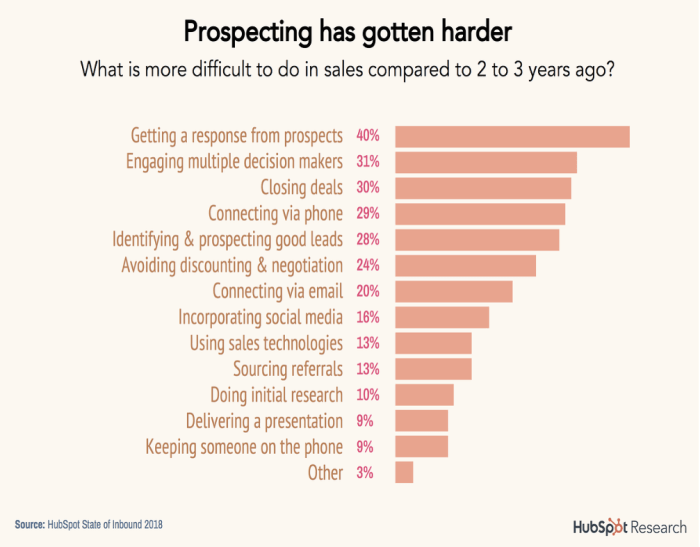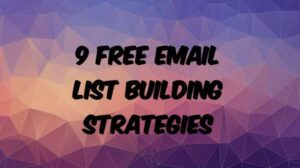
Cold email outreach best practices are essential tools for anyone looking to connect with potential clients or collaborators. By effectively implementing these strategies, you can turn a simple email into a powerful outreach tool that resonates with your audience.
In this guide, we’ll delve into techniques for personalizing your emails, crafting captivating subject lines, and determining the optimal length for your messages. Additionally, we’ll explore the significance of follow-up emails and integrating other marketing strategies to maximize your outreach efforts.
Cold Email Outreach Techniques
Cold email outreach is a vital strategy for businesses looking to connect with potential clients or partners. Its effectiveness largely hinges on how well the emails are crafted and tailored to the recipient. Focusing on personalization, engaging subject lines, and concise messaging can significantly enhance response rates and foster meaningful connections.
Importance of Personalization
Personalization in cold emails is crucial as it helps establish rapport and demonstrates that you’ve taken the time to understand the recipient’s needs. Implementing personalization effectively involves several key strategies:
- Research the recipient: Utilize social media platforms and professional networks to gather insights about their interests and challenges.
- Use the recipient’s name: Personalizing the greeting with the recipient’s name can create a friendly tone and increase engagement.
- Reference specific details: Mention a mutual connection, recent company news, or a relevant project to show you’ve done your homework.
- Tailor the content: Align your email’s message to address the specific needs or pain points of the recipient’s business.
Personalized emails can lead to a 26% higher open rate compared to generic outreach.
Crafting Engaging Subject Lines
The subject line is the first impression of your email and plays a pivotal role in whether your email gets opened or ignored. Effective subject lines should entice the reader and hint at the value within the email. Here are some techniques for crafting engaging subject lines:
- Keep it short: Aim for 6-10 words to ensure complete visibility on most devices.
- Create curiosity: Use intriguing language that makes the recipient want to learn more.
- Include a benefit: Clearly state what the reader stands to gain by opening the email.
- Use numbers or questions: These elements can draw attention and prompt the reader to engage.
Subject lines with numbers can boost open rates by up to 36%.
Ideal Length of a Cold Email
The ideal length of a cold email is essential for maintaining clarity and conciseness. A well-structured email should be brief, typically ranging between 50 to 125 words. This length allows you to convey your message effectively without overwhelming the reader. To maintain clarity:
- Get to the point quickly: State your purpose within the first two sentences.
- Avoid jargon: Use simple language to ensure your message is easily understood.
- Limit paragraphs: Use short paragraphs to enhance readability and keep the recipient engaged.
- Include a clear call-to-action: Direct the recipient on what steps to take next, whether it’s scheduling a call or responding to your email.
Research shows that emails between 125-250 words receive the highest response rates.
Best Practices for Follow-Up Emails
Following up after an initial cold email outreach is crucial for engagement and can significantly enhance response rates. The timing, content, and method of these follow-up emails can make all the difference in whether your prospect responds positively or not. Understanding the best practices for crafting these messages ensures that your follow-up efforts are effective and well-received.Timing is an essential element in sending follow-up emails.
Generally, a good rule of thumb is to wait about 3-5 business days after your initial outreach before sending a follow-up. This allows the recipient enough time to read and respond to your first email without feeling rushed. A well-timed sequence can look something like this:
Follow-Up Email Timeline
The following timeline can serve as a guideline for sending your follow-up emails:
- Day 1: Initial outreach email.
- Day 5: First follow-up email.
- Day 10: Second follow-up email.
- Day 15: Final follow-up email.
Each follow-up should be spaced out appropriately to avoid overwhelming the recipient and should include new information or insights that add value.When crafting follow-up messages, it’s essential to ensure they are relevant and engaging. Simply reiterating your previous email may not prompt a response. Instead, focus on adding value to your outreach. This can be achieved by:
Strategies for Crafting Follow-Up Messages
Highlighting additional resources, insights, or updates that relate to your initial outreach can increase your chances of getting a response.
- Include a relevant article or resource that complements your initial message.
- Share a recent success story or case study that may interest the recipient.
- Ask for their opinion on a topic related to your offering, making them feel valued and involved.
Each follow-up should maintain a friendly tone while clearly indicating your intent to connect further.A/B testing is a powerful strategy in optimizing follow-up emails. It can help determine which approaches resonate best with your audience. By testing different subject lines, email lengths, or content focuses, you can gather data on what leads to higher response rates.
Significance of A/B Testing
A/B testing involves sending two variations of a follow-up email to different segments of your audience. Here are key elements to consider when implementing A/B testing:
- Subject Lines: Test different subject lines to see which generates more opens.
- Content Length: Experiment with concise vs. detailed emails to gauge engagement.
- Call to Action: Vary the phrases used to encourage a response and measure effectiveness.
This systematic approach not only fine-tunes your follow-up strategy but also provides insights into your audience’s preferences, enhancing future outreach efforts.
Integrating Other Marketing Strategies

Combining cold email outreach with other marketing strategies can significantly enhance your campaign’s effectiveness and visibility. By integrating multiple channels, you can create a more cohesive marketing approach that resonates with your audience, builds credibility, and drives conversions.
Combining Cold Email Outreach with Banner Advertising
Integrating cold email outreach with banner advertising can enhance your brand visibility and reinforce your messaging. When people see your banner ads in conjunction with receiving your emails, it creates a sense of familiarity and trust. Here are key steps to effectively combine these strategies:
- Targeted Placement: Choose ad placements that align with your email audience demographics. Utilize platforms like Google Ads or social media to target specific groups.
- Consistent Messaging: Ensure that the visuals and text in your banner ads complement the messaging in your cold emails. This consistency helps in reinforcing your brand identity.
- Retargeting Strategies: Use retargeting ads for users who have opened your emails but haven’t converted. This keeps your offering top-of-mind.
- Tracking Campaign Performance: Analyze both email metrics (like open and click-through rates) and banner ad performance (like impressions and conversions) to refine your strategies based on data.
Role of Domain Names in Email Marketing Credibility
A well-chosen domain name plays a critical role in establishing credibility for your email marketing efforts. A professional domain can help avoid spam filters and improve deliverability. Here are important considerations regarding domain names:
- Brand Recognition: A domain that aligns with your brand name enhances recognition and trustworthiness. For example, a domain like “yourbrand.com” is more credible than “[email protected]”.
- Domain Age: Older domains often carry more authority. Consider investing in an established domain to boost credibility.
- Consistent Domain Usage: Use the same domain across all your marketing channels, including email, website, and social media, to create a cohesive brand presence.
- Secure and Professional: Utilize a .com domain, or other professional extensions, as these are generally perceived as more reliable compared to free email services.
Utilizing eBooks as Lead Magnets
eBooks serve as effective lead magnets when paired with cold email campaigns. They provide valuable content that can attract and engage potential leads. Here are techniques to leverage eBooks in your outreach efforts:
- Relevant Content: Ensure the eBook content is directly related to your target audience’s interests and pain points, offering tangible solutions.
- Engaging CTAs: Incorporate clear calls to action within your emails, inviting recipients to download the eBook for free in exchange for their contact information.
- Follow-Up Strategy: Plan follow-up emails after the eBook has been downloaded, offering additional resources or an invitation for a consultation, which can help nurture the lead.
- Use of Landing Pages: Create a dedicated landing page for the eBook that Artikels key benefits and offers a simple download process, enhancing user experience.
Final Wrap-Up

In summary, mastering cold email outreach best practices can significantly enhance your ability to engage with prospects and drive responses. By personalizing your approach and strategically following up, you set the stage for building valuable connections that can benefit your business in the long run.
Question Bank
What is the best time to send cold emails?
The best time to send cold emails is typically mid-morning or mid-afternoon on weekdays when recipients are more likely to check their inbox.
How many follow-ups should I send?
It’s recommended to send 2-3 follow-ups, spaced out over a couple of weeks, to increase the chances of a response.
Should I use a template for cold emails?
While templates can be useful, ensure you personalize them for each recipient to make your outreach more effective.
How can I track the success of my cold email campaigns?
Use email tracking tools to monitor open rates, click rates, and responses to gauge the effectiveness of your campaigns.
What should I avoid in cold emails?
Avoid overly salesy language, long paragraphs, and irrelevant information that may deter recipients from engaging with your message.






